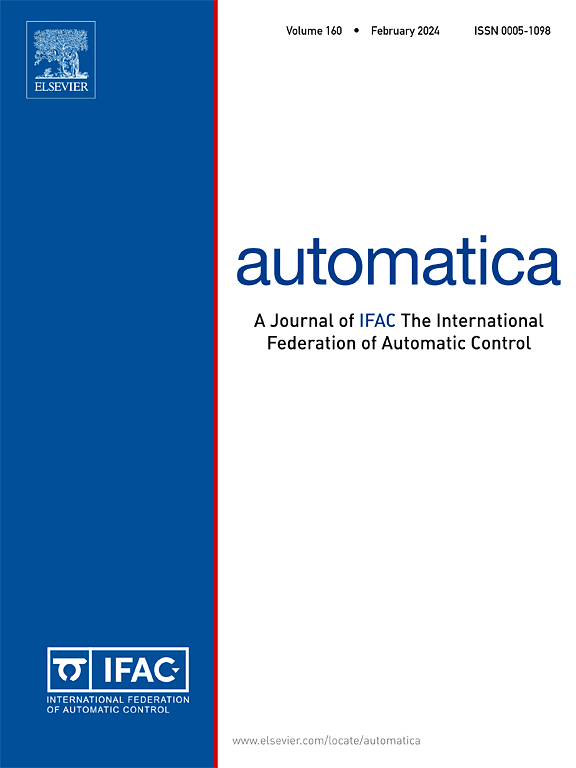Data-driven control performance degradation recovery as an extension of loop transfer recovery
IF 4.8
2区 计算机科学
Q1 AUTOMATION & CONTROL SYSTEMS
引用次数: 0
Abstract
This article investigates the problem of data-driven control performance degradation recovery from performance degradation modeling and a concrete control structure associated with data-driven implementation methods. The control performance degradation recovery problem is inspired by and serves as an extension of the classical loop transfer recovery (LTR). In the first part, a loop performance degradation model is proposed where performance degradation is quantized, between the “ideal” full state-feedback control and the “real” dynamic output feedback control scenarios, by the error at the plant input and output. It is demonstrated that control performance degradation recovery is consistent with optimizing the robust stability, promoting the ability of disturbance rejection and improving the fault detectability. This consistency promises various applications of the model, for instance, to the design of fault-tolerant control systems. In the second part, a concrete realization of the control performance degradation recovery problem is presented as optimizing an norm that is dependent of the Youla parameter system. Data-driven formulation of the problem is introduced together with data-driven norm estimation involved in it. In the third part, data-driven optimization method for the norm is developed for real-time performance degradation recovery. The data-driven norm estimation and optimization method also links the classical model-based norm optimization to the data-driven field.
求助全文
约1分钟内获得全文
求助全文
来源期刊

Automatica
工程技术-工程:电子与电气
CiteScore
10.70
自引率
7.80%
发文量
617
审稿时长
5 months
期刊介绍:
Automatica is a leading archival publication in the field of systems and control. The field encompasses today a broad set of areas and topics, and is thriving not only within itself but also in terms of its impact on other fields, such as communications, computers, biology, energy and economics. Since its inception in 1963, Automatica has kept abreast with the evolution of the field over the years, and has emerged as a leading publication driving the trends in the field.
After being founded in 1963, Automatica became a journal of the International Federation of Automatic Control (IFAC) in 1969. It features a characteristic blend of theoretical and applied papers of archival, lasting value, reporting cutting edge research results by authors across the globe. It features articles in distinct categories, including regular, brief and survey papers, technical communiqués, correspondence items, as well as reviews on published books of interest to the readership. It occasionally publishes special issues on emerging new topics or established mature topics of interest to a broad audience.
Automatica solicits original high-quality contributions in all the categories listed above, and in all areas of systems and control interpreted in a broad sense and evolving constantly. They may be submitted directly to a subject editor or to the Editor-in-Chief if not sure about the subject area. Editorial procedures in place assure careful, fair, and prompt handling of all submitted articles. Accepted papers appear in the journal in the shortest time feasible given production time constraints.
 求助内容:
求助内容: 应助结果提醒方式:
应助结果提醒方式:


